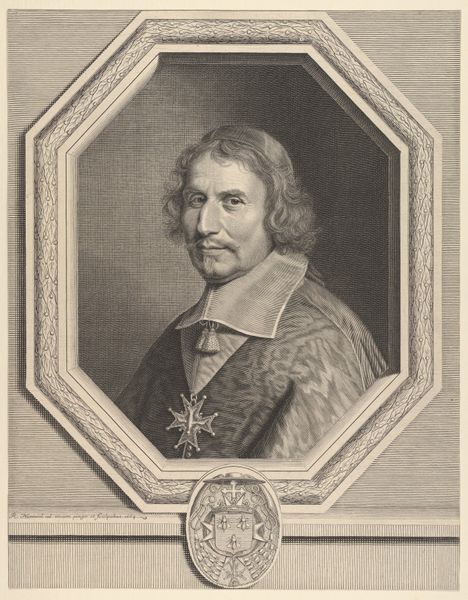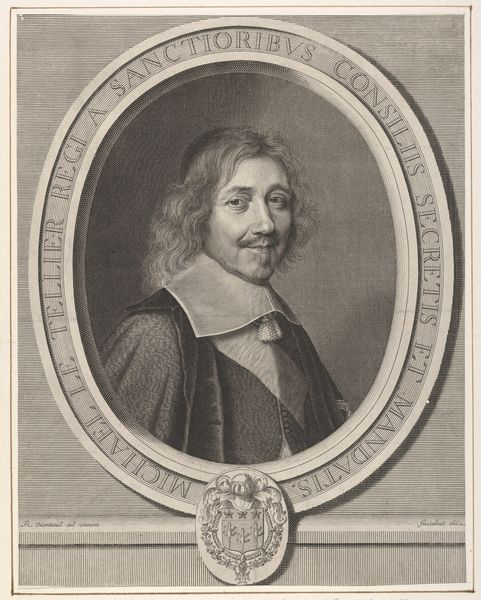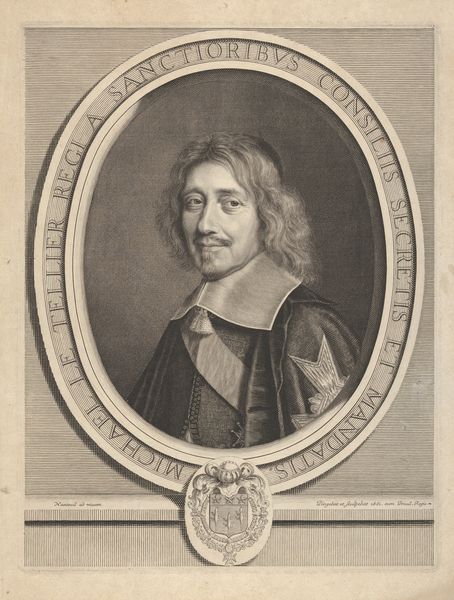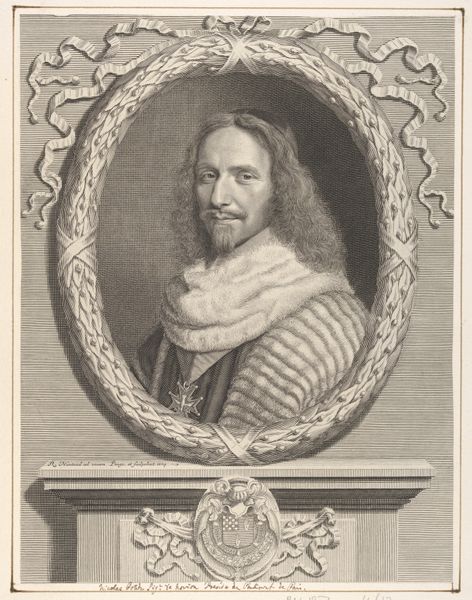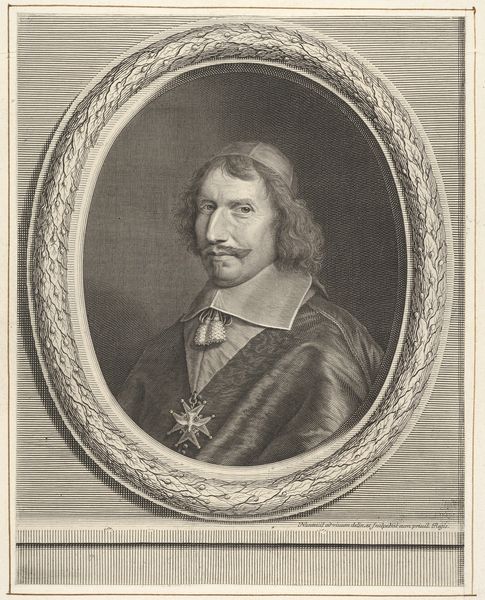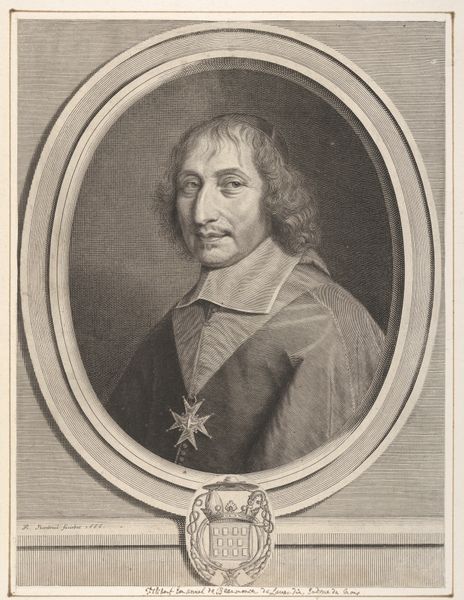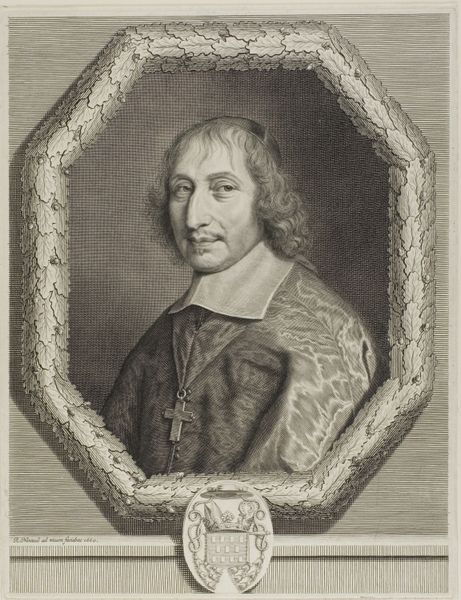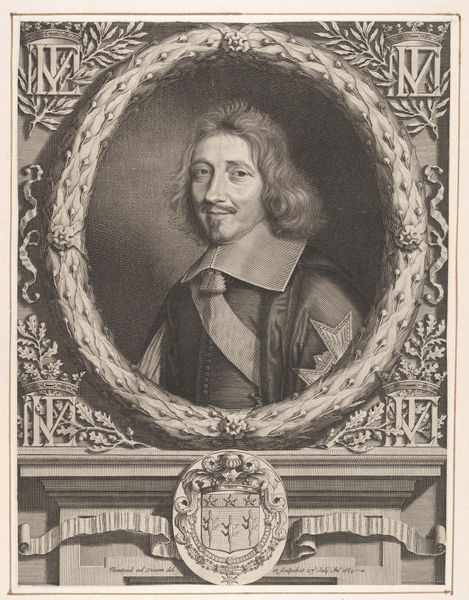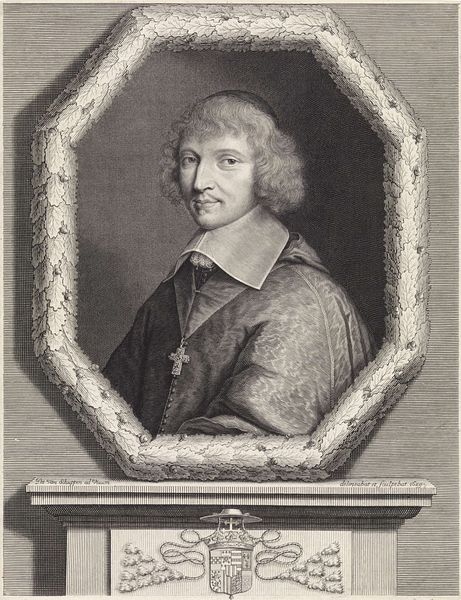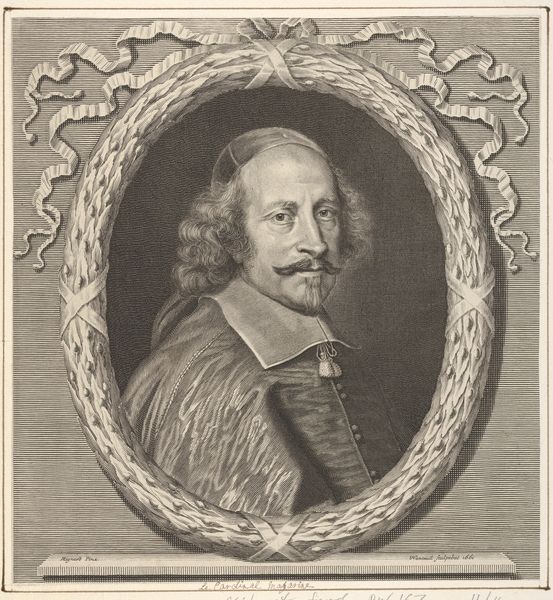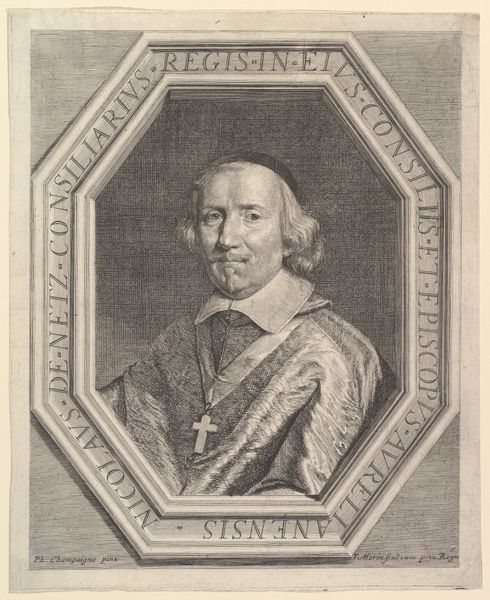
drawing, print, engraving
#
portrait
#
drawing
#
baroque
# print
#
engraving
Dimensions: sheet: 13 15/16 x 10 13/16 in. (35.4 x 27.5 cm)
Copyright: Public Domain
Curator: Here we have Robert Nanteuil's "Cardinal Antonio Barberini," an engraving completed in 1663. The portrait captures the cardinal within an elaborate, almost celebratory frame. What strikes you first about it? Editor: The overall feel is one of restrained power. Despite the ornate wreath and Barberini family crest below, the somber monochrome and the Cardinal's composed expression convey authority, rather than ostentation. Curator: Absolutely. Nanteuil, a master of the engraving medium, would have started with a metal plate, incising lines to create the image. The act of engraving is one that requires mastery to convey form and emotion as clearly as Nanteuil manages to do. He printed primarily portraits—the rise of portrait engravings coincided with a growing interest among the bourgeois to commission reproducible, affordable artwork of themselves. Editor: I find the Barberini crest below to be quite compelling as well. Each charge is quite symbolic: the bees symbolizing the family's dedication to hard work. How fitting given what we know about the process and production needed to achieve the crisp textures and shadows of this baroque artwork. Curator: A very relevant point about process and materials! Thinking about the crest, one wonders how conscious the average owner was of those emblems back then. To what extent did those status symbols hold weight outside the inner circles of nobility? Editor: The act of displaying such a portrait likely acted as a statement of values for anyone interested in obtaining and displaying one like it. Beyond that, this portrait reminds me of the Baroque era’s fascination with image-making as a form of legacy creation. These are images designed to last. Curator: Indeed. Through careful detail and artistry, Nanteuil manages to capture both the material splendor and the symbolic weight of Barberini’s position. Editor: It speaks volumes, even now. And it also prompts one to consider, from Nanteuil's perspective, the tension between craftsmanship and status, when so much material culture acted as shorthand. Thank you for elaborating on Nanteuil’s process—it really enriched my reading of it.
Comments
No comments
Be the first to comment and join the conversation on the ultimate creative platform.
